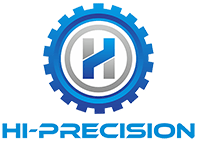CNC programming allowance refers to a certain amount added on the basis of theoretical machining dimensions during CNC machining to ensure that the machined parts meet the required dimensions and quality requirements. The setting of CNC programming allowance has an impact on the accuracy, surface quality, machining speed, tool life, etc. of the machined parts, and is an important parameter in CNC machining.

The setting of CNC programming allowance needs to consider multiple aspects, such as the properties of the machining material, the parameters of the cutting tool, and the accuracy of the machine tool. Generally speaking, in machining with high precision requirements, the CNC programming margin will be relatively small; In machining with low precision requirements or rough surface quality of the workpiece, the CNC programming margin will be relatively large.
The specific value of CNC programming allowance can be determined based on the requirements of the workpiece and the actual situation. In some common CNC machining, such as milling, turning, etc., the following aspects are usually considered to determine the CNC programming allowance:
- Tool radius allowance: As the actual radius of the tool may differ from the theoretical value, it is necessary to consider this difference during programming and consider the actual radius of the tool as the allowance.
- Machining size allowance: When formulating CNC programming, a certain size allowance can be increased based on the actual size requirements of the workpiece and the machining accuracy of the machine tool, ensuring that the final machined workpiece size is within the allowable range.
- Surface roughness margin: In CNC machining, factors such as the rigidity of the machine tool and cutting speed can affect the surface roughness of the workpiece. In order to ensure that the surface quality of the final processed workpiece meets the requirements, it is necessary to consider appropriate surface roughness allowances.
- Considering the deformation of materials: During CNC machining, materials are affected by cutting forces and thermal deformation, resulting in changes in the shape and size of the parts. In order to ensure that the parts can meet the design requirements in terms of size and shape, compensation can be made by setting appropriate CNC programming allowances.
- Considering the thermal deformation of machine tools: During CNC machining, the machine tool will undergo thermal deformation due to cutting heating, which affects the machining accuracy of the parts. By setting the CNC programming margin, compensation can be made based on the thermal deformation of the machine tool, thereby ensuring the machining accuracy of the parts.
- Considering the changes in cutting force: In CNC machining, cutting force will change with changes in cutting depth, cutting speed, and cutting method. If the influence of cutting force is not considered, it may lead to excessive deformation during the machining process of the parts, and even cause tool fracture. Therefore, by setting the CNC programming allowance, compensation can be made based on changes in cutting force, thereby ensuring machining quality and tool life.
The setting of CNC programming allowance requires a combination of experience and practice, and needs to be determined based on specific machining parts and requirements. Reasonable CNC programming allowances can improve machining efficiency and ensure machining quality. Therefore, in the CNC programming process, the setting of allowances should be fully considered and tested to ensure that the machining results meet the requirements.
In short, the setting of CNC programming allowances is to ensure the accuracy and quality of part machining. By setting allowances reasonably, part dimensions can be adjusted and corrected in a timely manner during the machining process, thereby improving machining efficiency and quality.
